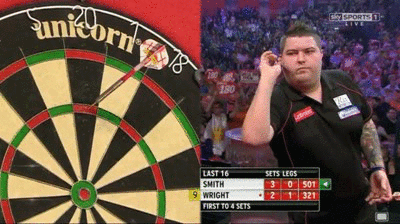- Classical Test Theory
- Reliability
Today
Perfect Measurements?

- Recall: No instrument is perfect and no measurement is without error
- More difficult in psychology
Dealing with Imperfect Measurements
- Error is part of life
- Minimize error
- Partition out error
Classical Test Theory Definition
- 1. No single approach to the measurement of any construct is universally accepted.
- 2. Psychological measurements are usually based on limited samples of behavior.
- 3. The measurement obtained is always subject to error.
- 4. The lack of well-defined units on the measurement scales poses still another problem.
- 5. Psychological constructs cannot be defined only in terms of operational definitions but must also have demonstrated relationships to other constructs or observable phenomena.
Classical Test Theory Model
- Observed Score = True Score + Error
- SLR: Height = Weight + Residual
Variance
- You administer a test and the students get the following grades: 76, 87, 88, 80, 77. Calculate the variance.
- You administer the same test again to other students and they get the following grades: 107, 78, 78, 94, 77. Do you expect that the variance was greater? Why?
Partition Observed Score Variance
- Total Observed Variance = True Score Variance + Error Variance
- True Score Variance is considered to be stable
- How does Error Variance affect the consistency and usefulness of our test?
What Goes into Error Variance


- Measurement Error
Measurement Error
- Random Error
- Unpredictable and inconsistent sources of error
- Systematic Error
- Constant and predictable source of error
- Examples?
- Which poses a bigger threat to a consistent measure?
Error Sources
- Constructing tests
- Administering tests
- Scoring tests
- Interpreting tests
Reliability
- Proportion of observed variance attributed to true variance
- What does it mean?

Types of Reliability
- Test-Retest
- Coefficient of stability
- Parallel Forms
- Coefficient of equivalence
- Parallel forms reliability
- Alternate Forms (constructed Parallel)
- Alternate forms reliability
- Measures of Internal Consistency
Different types of associations
- Pearson's product-moment correlation only appropriate when variables are continuous and are interval/ratio scales
- Alternatives when variables are dichotomous either naturally or artifically (assumed to have a continuous underlying scale)
- Phi coefficient, equivalent to Pearson's correlation but for dichotomous variables
- Polychoric coefficient, an index of association between two artifically ordinal variables
- Tetrachoric coefficient, an index of association between two artifically dichotomized variables
- Point-biserial coefficient, an index of association betweeen a dichotomous and a continous variable
- Biserial coefficient, an index of association betweeen an artificially dichotomous and a continous variable
- Spearman Rank-Order coefficient, an index of association where at least one variable is ordinal
- Kendall's tau, alternative to Spearman
Internal consistency
- Measure level of consistency or agreement between items
- A test is unidimensional, all the items measure the same latent construct
- The more items measure just one construct, the higher the inter-item consistency
- Is it always possible or desirable to have a test that measures just one thing?
Split-Half Reliability
- Obtained by correlating two pairs of scores from equivalent halves of a single test
- "Creating two equivalent forms of a test"
- What are the steps to calculate this?
- How might we consider making splits?
- What should we be careful of?
Corrections
- Why do we need a correction?
- Correlation is affected by measurement error
- Correlation is affected by range restriction
- All things considered, which test would be more reliable?
- Test A: 5 items or Test B: 10 items?
- Tests A and B: 7 items each?
- Reliability is affected by test length
Spearman-Brown Correction
- r is the correlation of the original two splits
- N is the number of "tests", i.e. the factor by which the test is increased
Uses of Spearman-Brown
- Determine length of test (add or delete items)
- Test modification
Working with Spearman-Brown
| N | r | SB's r |
|---|---|---|
| 2 | .8 | |
| 3 | .8 | |
| 3 | .6 | |
| .6 | .8 |
Spearman Brown in R
# Install and load the package
install.packages("CTT")
library("CTT")
# old relibility is 0.6, if the measure is lengthened
# by a factor of 2, the relibility of new test is:
spearman.brown(0.6, 2,"n")
# old relibility is 0.5, if we want a new measure to
# be 0.8, the new test length is:
spearman.brown(0.5, 0.8, "r")
Kuder-Richardson 20
- De facto statistic for dichotomously scored items
- KR-20 typically more conservative than split-half
Caclulating KR-20
Coefficient alpha
- May be conceptualized as the mean of all possible split-halves
- Can use on ordinal scales or scales that aren't scored dichtomously
- Ranges from 0 to 1
- Want higher values for making high-stakes decisions and lower values OK for research
- This is an overly used statistic with problems (Sijtsma, 2009)
- Always consider reporting 95% confidence intervals!
- Alternative proportional distance, doesn't depend on number of items on instrument
Inter-rater reliability
- Two raters measure the same behavior
- For example: Number of aggressive behaviors
- Degree to which these raters report the same incidence of aggressive behaviors is a measure of reliablity
- Correlate scores from raters
- Test scores have reliability NOT test
IRR: Example
| Child | Parent 1 | Parent 2 |
|---|---|---|
| 1 | 5.5 | 6.0 |
| 2 | 5.2 | 5.2 |
| 3 | 4.6 | 4.0 |
| 4 | 6.6 | 5.6 |
Test characteristics on reliability
- More homogeneous, higher reliability
- More static the characteristic, higher reliability
- Restriction range, lower reliability
- Power vs. speed test
- If speed, reliability estimates may be too high
- Test-retest, alternate-forms, or split halves from two independently timed half tests
- Criterion-referenced, lower variability, lower reliability
Calculating True Score
- Anna takes 3 tests (parallel forms) in math
- She gets an 8, 7, and 7.5
- What should we estimate as her true score/ability in math?
- Do you think that score is her score?
Quantifying the Uncertainty - SEM
- Standard Error of Measurement = Standard Deviation of Observed Scores * Square Root of 1 - Reliability Coefficient
- Can use this to create confidence intervals and using normality assumption of scores on large number of tests
- Determine plausible values for a person's true score
SEM: Example
- A math test is administered. The test scores have a reliability coefficient of 0.80 and a standard deviation of 0.5
- What is the standard error of measurement?
- If Anna scored a 7.5, what range of values can we be 95% confident that her true score lies between? 99% confident?
Standard Error of the Difference
SED: Example
Next time
- Quiz and validity (chapter 6)